2009 Hyundai Tucson

FAST FACTS
| 1. For 2009 almost every Tucson model gets improved fuel economy, however, models like our four-speed automatic GLS get some of the worst ratings for their class at 20/25 mpg (city/highway). |
| 2. Possibly the Tucson’s most attractive feature is the price, starting at just $18,070. |
| 3. Stability Control and Traction Control are standard. |
The entry level SUV/crossover market is easily one of the most highly competitive segments in the auto industry. It should come as no surprise then that Hyundai’s Tucson, first launched in 2005, is becoming long-in-the-tooth and doesn’t quite have what it takes to hold its own with the wide range of current competitors on the market.
Four years ago the Tucson was a fabulous new vehicle offering plenty of space in a fuel-efficient package at a more-than-competitive price-point. Since then few things have changed… for the Tuscon at least. As for the market, it has evolved significantly.
For starters, there is the look of the Tucson. It’s actually a nice looking vehicle and has aged well. The bulbous exterior looks more like the designs of pricier SUVs, or of some of the newer members of this segment – like the Rogue.
Still, it doesn’t, and never has, looked like the competition. Overall it’s a pleasing package although it has always been puzzling that the less expensive four-cylinder models get a fully painted body whereas the more expensive SE V6 models get the plastic wheel arches. Intended to give the V6 a more rugged look, it does a better job of making it look cheap.
This is, however, a real advantage for base models (like out GLS tester) that actually look more expensive than they are (priced at just $18,070). Also a nice bonus is the fact that the Tucson comes with standard 16-inch aluminum wheels, while many competitors offer just steel wheels and hubcaps.
BASIC INTERIOR MORE “ACCENT” THAN “ELANTRA”
OK, so the exterior is mostly without fault. But that’s pretty much where the compliments end. The interior is just plain cheap. From the thin and stiff seats to the cheap plastics, the Tucson seems more in line with the Accent than the Elantra it is based on.
Still, my vehicle was well equipped, as all Tucsons come with standard AC, as well as power winds locks and mirrors.
By far the worst feature of my tester was the Kenwood AM/FM/CD player with its integrated Garmin GPS system. Don’t get me wrong, I couldn’t be more excited about having a good aftermarket GPS system in a production car (as opposed to the terrible units the manufacturers tend to produce) but the screen was so low on the dash it was practically useless and the space left for the audio controls mean that each button and knob is so small it is almost impossible to use.
To be fair, when it comes to the interior, the Tucson is incredibly flexible, offering numerous ways to fold down seats so that you can be sure to fit any item. Rear seat legroom is also excellent.
When it comes to cargo space the Tucson is competitive, rating quite close to many of its competitors. Unfortunately for Hyundai “competitive” does not mean “equal-to” and we should point out that it is slightly under every major competitor – with the exception of the Nissan Rogue.
IMPROVED FUEL ECONOMY BUT STILL AT THE BACK OF THE PACK
Next to price and before cargo capacity on every buyer’s list will be fuel economy, and here the Tucson has fallen behind.
Hyundai says that for ’09 almost every Tuscon model gets an improvement in fuel economy thanks to better engine and transmission programming and a better torque converter. Manual 4-cylinder models get four percent better highway mileage, the V6 AWD gets six percent better mileage in the city and models like my automatic four-cylinder get five percent better city mileage. The result for my GLS is a rating of 20/25 mpg city/highway. This is well below the Rav4, CR-V and Rogue, which rate 22/28, 20/27 and 22/27 respectively.
Both the Jeep Compass and Liberty rate close with a 21/25 mpg rating with the significantly more powerful 172hp 2.4-liter four cylinder. Interestingly Jeep now offers both SUVs with a 150hp 2.0-liter four-cylinder that gets 23/27 mpg.
The Tucson even rates well under vehicles you would expect to be less efficient, like the Ford Escape, which has a rating of 20/28 mpg.
CONSTANTLY HUNTING 4-SPEED TRANSMISSION
The reason that most of the competition has better mileage (while at the same time offering significantly more power) is that they offer five or even six-speed transmissions, whereas the Tucson is only offered with a four-speed auto.
And my gripes with the transmission aren’t just limited to its number of gears and resulting poor fuel economy. The tranny seems to hunt gears endlessly.
As for the engine that transmission is attached to, it is a 2.0-liter four-cylinder with 140hp and 136 ft-lbs of torque. As already mentioned, it is roughly 20hp less than the competition and a few 100ccs short in size – with the exception of the Kia Sportage, which uses the exact same powerplant.
The engine is also quite loud from inside the cabin. Hyundai generally builds quiet cars but many of their models seem to need additional sound deadening at the firewall.
For those who demand more power, Hyundai does offer a 173hp 2.7-liter V6 model.
It’s unlikely most entry-level SUV owners will actually need to pull much and if they get the Tucson they will be limited. Without trailer brakes the towing capacity is rated at 1,000lbs. That number increases only slightly to 1,500 lbs with brakes (or 2,000-lbs for the V6).
PLENTY OF STANDARD SAFETY FEATURES
Despite its faults, the Tucson’s safety rating it definitely top notch. Inside the cabin there are six airbags including front and side impact airbags for the driver and passenger, as well as roof-mounted side curtain airbags for both the first and second row. Four-wheel disk brakes with ABS and EBD are standard and the Tucson even features Brake Assist, which provides maximum braking force when a panic stop is detected.
Possibly more important that any of these is the inclusion of Stability Control and Traction Control as standard equipment.
THE VERDICT
After all my gripes, you’d think the Tucson would be completely out of the running and yet it can still compete in the jam-packed entry-level SUV segment. The reason for this is three-fold: looks, safety and most importantly… price. (Oh, and then there’s that 5 year/60,000 mile bumper to bumper warranty).
I may detest the interior of the vehicle and its four-speed transmission but those factors allow Hyundai to sell the Tucson well below almost all of its competitors. Were it not for Hyundai’s competitive price-point, however, this would not be the case. There are far better vehicles in this segment but the reality is that they are priced accordingly.
POSITVE
NEGATIVE

With AutoGuide from its launch, Colum previously acted as Editor-in-Chief of Modified Luxury & Exotics magazine where he became a certifiable car snob driving supercars like the Koenigsegg CCX and racing down the autobahn in anything over 500 hp. He has won numerous automotive journalism awards including the Best Video Journalism Award in 2014 and 2015 from the Automotive Journalists Association of Canada (AJAC). Colum founded Geared Content Studios, VerticalScope's in-house branded content division and works to find ways to integrate brands organically into content.
More by Colum Wood
















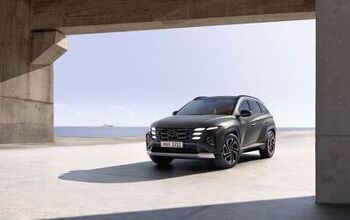
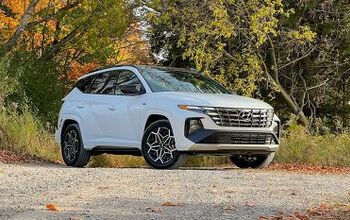
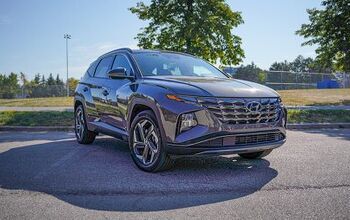

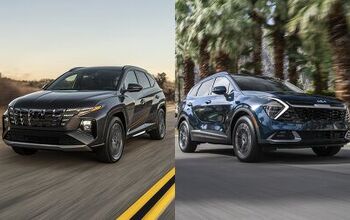

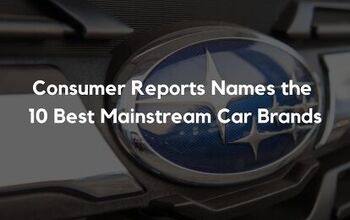
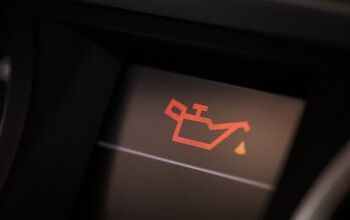


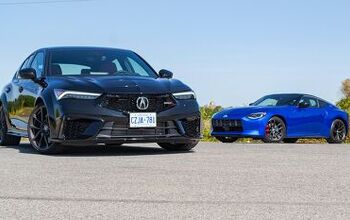




Comments
Join the conversation